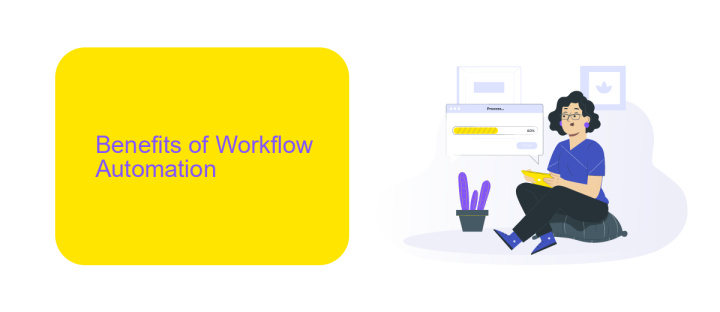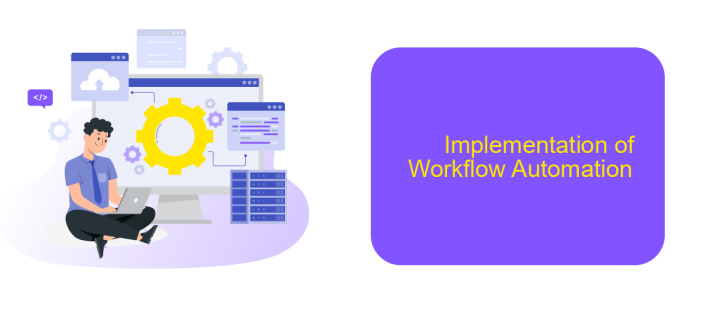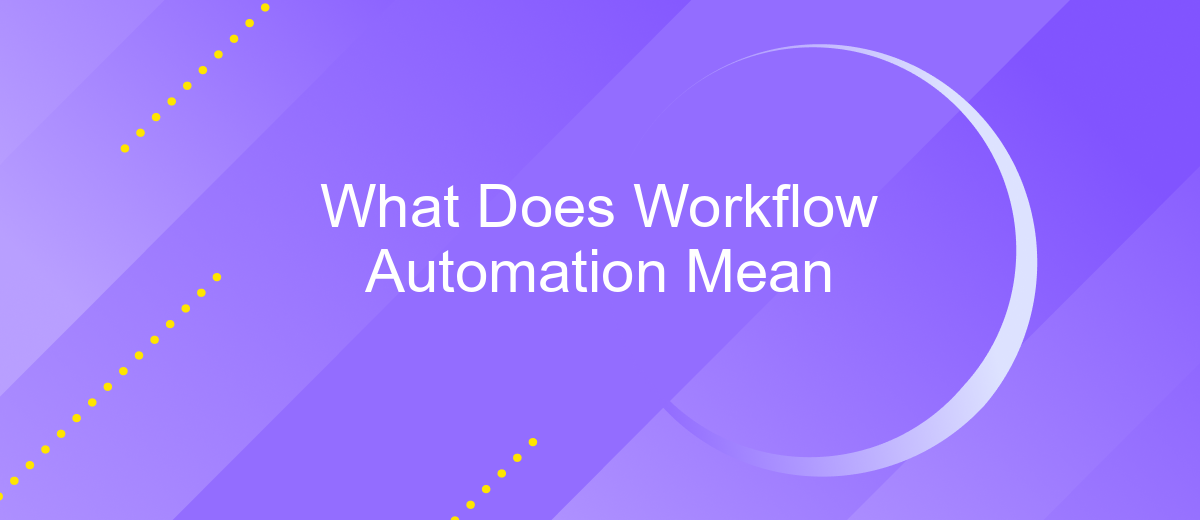What Does Workflow Automation Mean
Workflow automation refers to the use of technology to streamline and automate repetitive tasks and processes within an organization. By implementing workflow automation, businesses can improve efficiency, reduce errors, and free up employees to focus on more strategic activities. This article explores the concept of workflow automation, its benefits, and how it can transform the way companies operate.
What is Workflow Automation?
Workflow automation is the process of using technology to streamline and automate repetitive tasks and processes within a business or organization. It aims to improve efficiency, reduce errors, and free up time for employees to focus on more strategic activities. By implementing workflow automation, businesses can achieve greater consistency and reliability in their operations.
- Reduces manual intervention
- Increases productivity
- Enhances accuracy and consistency
- Improves compliance and tracking
- Facilitates better resource management
One of the key aspects of workflow automation is the integration of various tools and platforms. Services like ApiX-Drive offer seamless integration solutions, allowing businesses to connect different applications and automate data transfer between them. This not only simplifies the automation process but also ensures that all systems work together efficiently. By leveraging such services, organizations can optimize their workflows and achieve significant time and cost savings.
Benefits of Workflow Automation

Workflow automation significantly enhances efficiency by streamlining repetitive tasks, allowing employees to focus on more strategic activities. This leads to improved productivity and reduced operational costs. By automating workflows, organizations can minimize human errors, ensuring more accurate and reliable outcomes. Furthermore, it facilitates better compliance with industry regulations and standards by maintaining consistency in processes.
Another key benefit is the ability to integrate various tools and systems seamlessly. Services like ApiX-Drive enable businesses to connect multiple applications, ensuring smooth data flow and communication between different platforms. This not only saves time but also enhances data accuracy and accessibility. Additionally, workflow automation provides valuable insights through real-time analytics, helping organizations make informed decisions and optimize their processes continuously.
Use Cases of Workflow Automation

Workflow automation can significantly enhance efficiency and accuracy in various business processes. By automating repetitive tasks, organizations can save time, reduce human error, and allow employees to focus on more strategic activities.
- Customer Support: Automate ticketing systems to ensure timely responses and resolution of customer issues.
- Human Resources: Streamline onboarding processes by automating document submission, approvals, and employee training schedules.
- Marketing Campaigns: Use automation to manage email marketing, social media posts, and lead nurturing activities.
- Sales Processes: Automate lead assignment, follow-up reminders, and reporting to enhance sales team productivity.
- Data Integration: Utilize services like ApiX-Drive to automate data transfer between different platforms, ensuring seamless integration and real-time updates.
Incorporating workflow automation in these areas not only boosts productivity but also allows for better resource management and improved service delivery. By leveraging tools and services designed for automation, such as ApiX-Drive, businesses can achieve a higher level of operational efficiency and data accuracy.
Implementation of Workflow Automation

Implementing workflow automation involves several critical steps to ensure a seamless transition from manual processes to automated systems. The first step is to identify repetitive tasks and processes that can benefit from automation. This requires a thorough analysis of current workflows to pinpoint inefficiencies and bottlenecks.
Once the tasks are identified, the next step is to select the appropriate tools and software to facilitate automation. Platforms like ApiX-Drive can be invaluable in this phase, as they offer robust integration capabilities with various applications, enabling seamless data flow and process automation.
- Analyze and identify tasks for automation
- Select suitable automation tools and software
- Set up integrations using platforms like ApiX-Drive
- Test and refine automated workflows
- Monitor performance and make necessary adjustments
After setting up the automated workflows, it is crucial to test them thoroughly to ensure they function as intended. Continuous monitoring and refinement are essential to maintain efficiency and address any issues that may arise. By following these steps, businesses can successfully implement workflow automation and achieve significant productivity gains.


Future of Workflow Automation
The future of workflow automation promises to revolutionize the way businesses operate by integrating advanced technologies such as artificial intelligence (AI) and machine learning (ML). These technologies will enable systems to learn from data, make intelligent decisions, and optimize processes in real-time. This shift will not only increase efficiency but also allow employees to focus on more strategic tasks, driving innovation and growth within organizations.
Moreover, the rise of no-code and low-code platforms will democratize workflow automation, making it accessible to non-technical users. Tools like ApiX-Drive are leading the charge by offering seamless integration capabilities, allowing businesses to connect various applications without the need for extensive coding knowledge. As more companies adopt these platforms, we can expect a significant reduction in manual processes, leading to faster turnaround times and improved accuracy. The future of workflow automation is bright, promising a more streamlined and efficient business landscape.
FAQ
What is workflow automation?
How can workflow automation benefit my business?
What types of tasks can be automated?
How do I get started with workflow automation?
Is workflow automation difficult to implement?
Routine tasks take a lot of time from employees? Do they burn out, do not have enough working day for the main duties and important things? Do you understand that the only way out of this situation in modern realities is automation? Try Apix-Drive for free and make sure that the online connector in 5 minutes of setting up integration will remove a significant part of the routine from your life and free up time for you and your employees.

